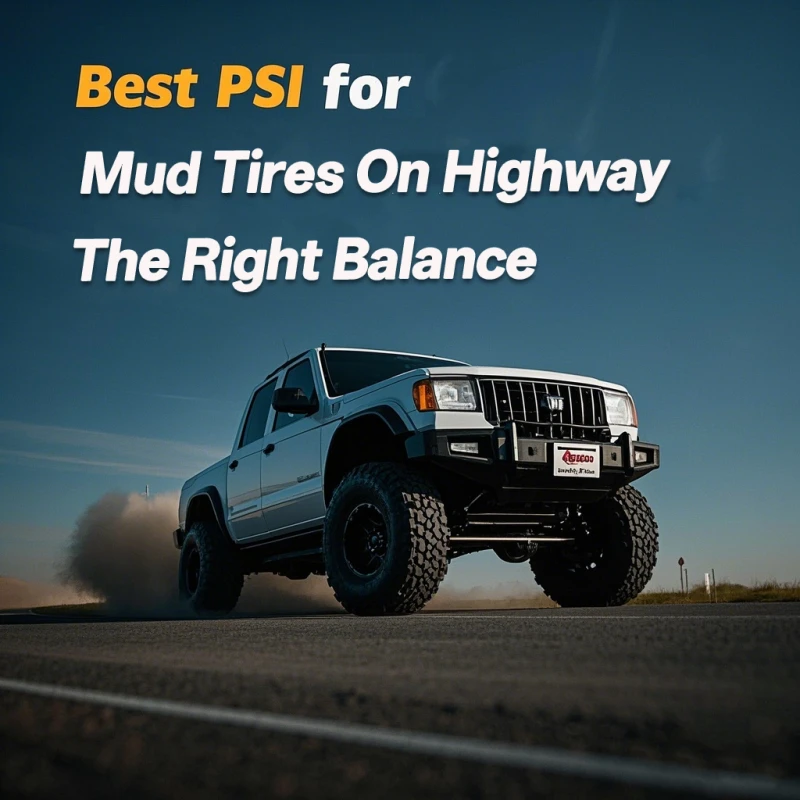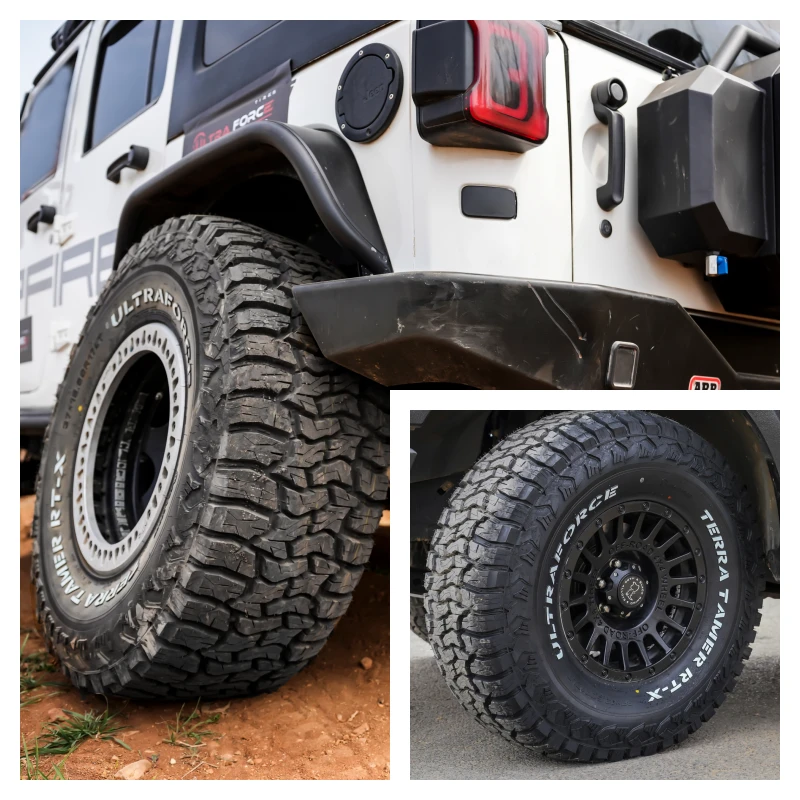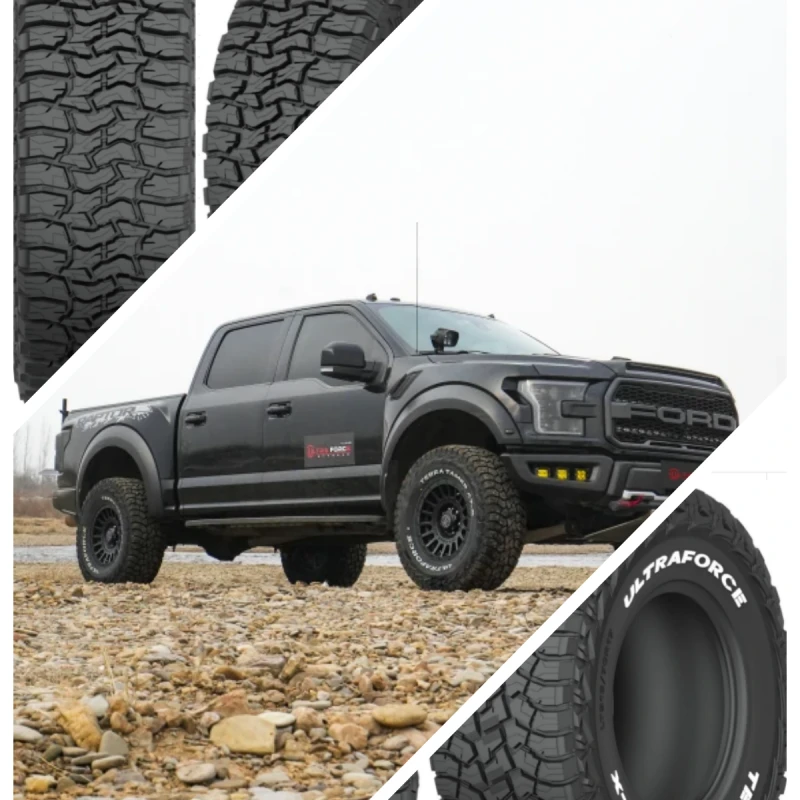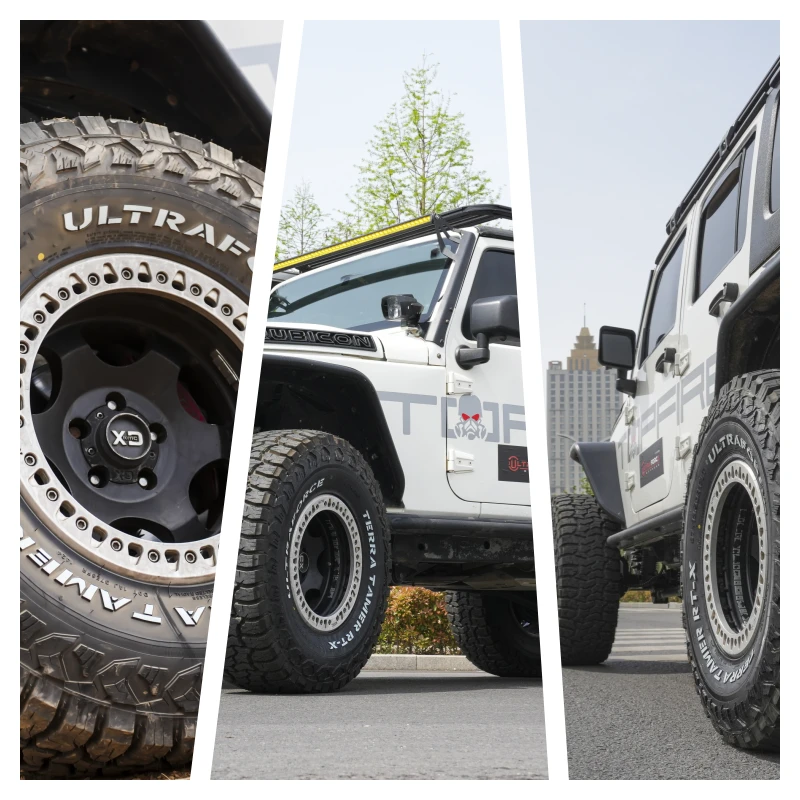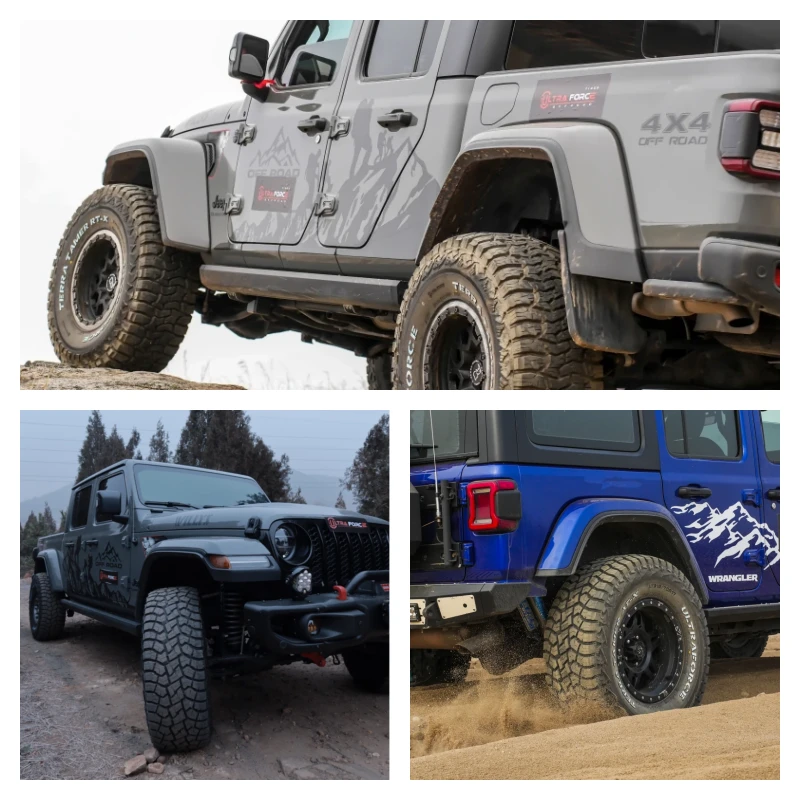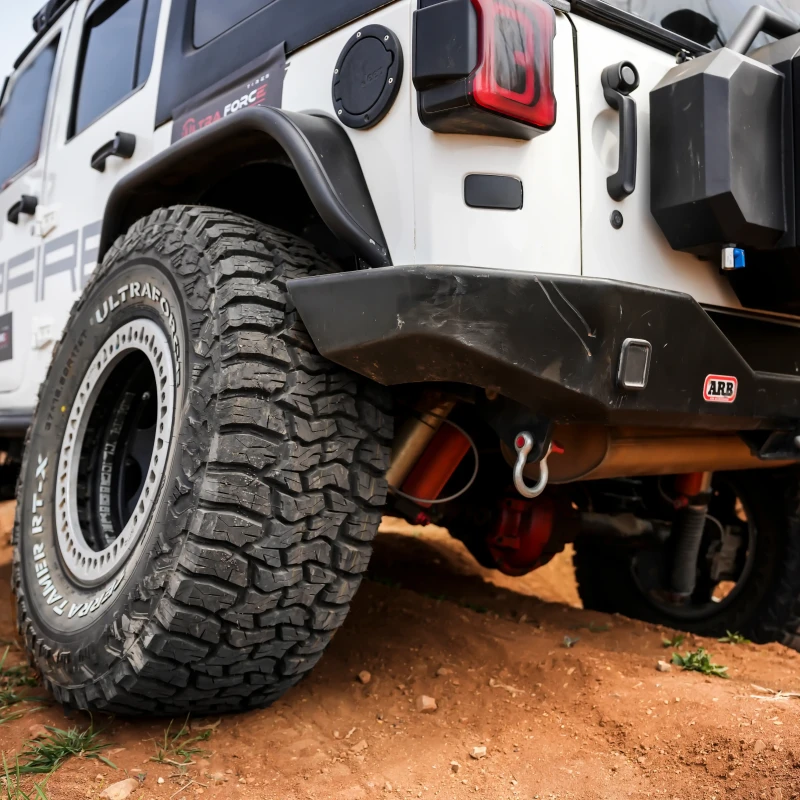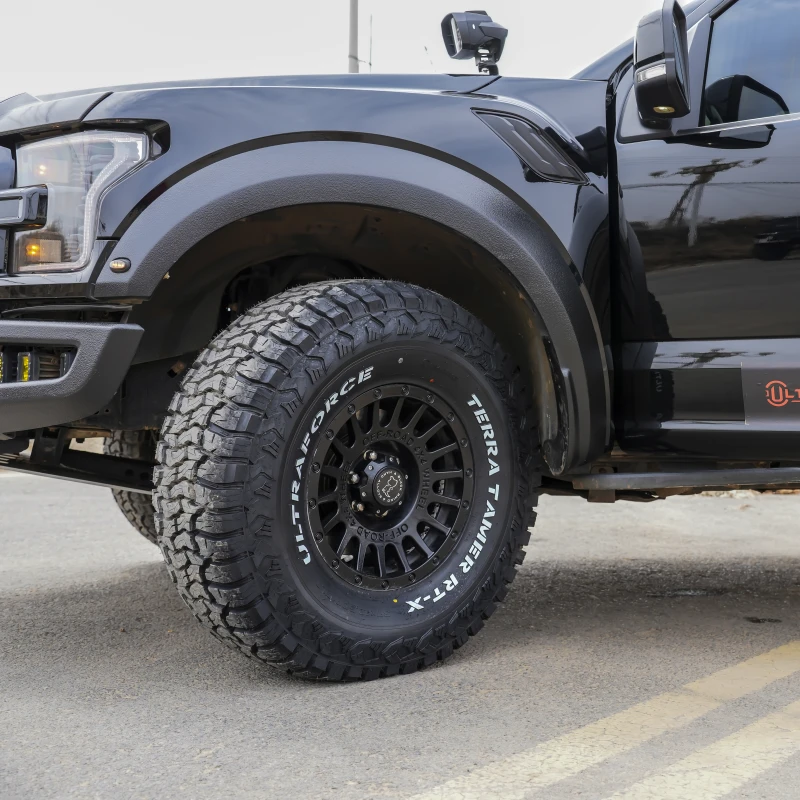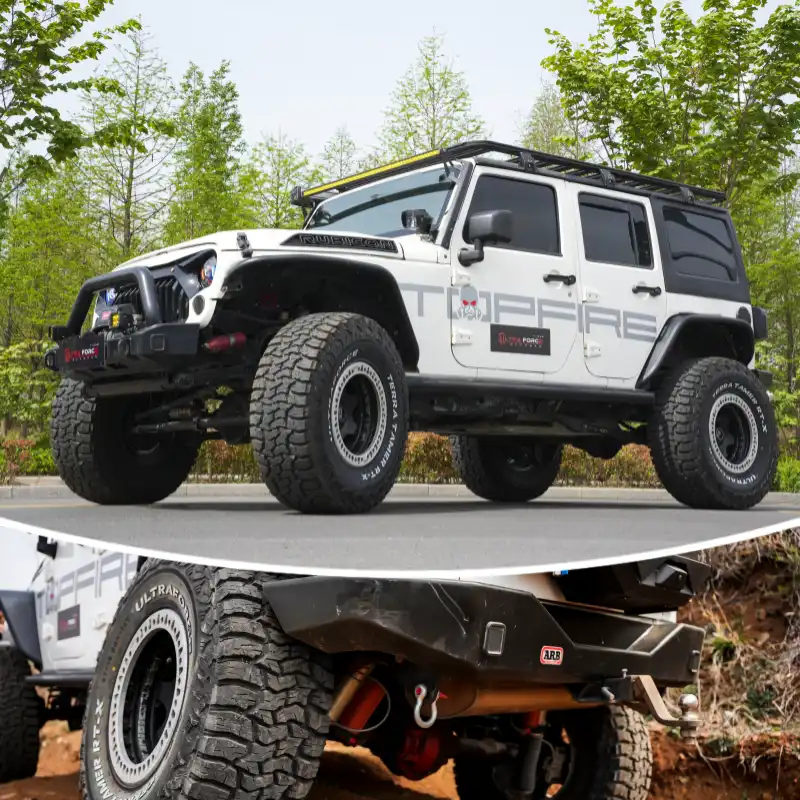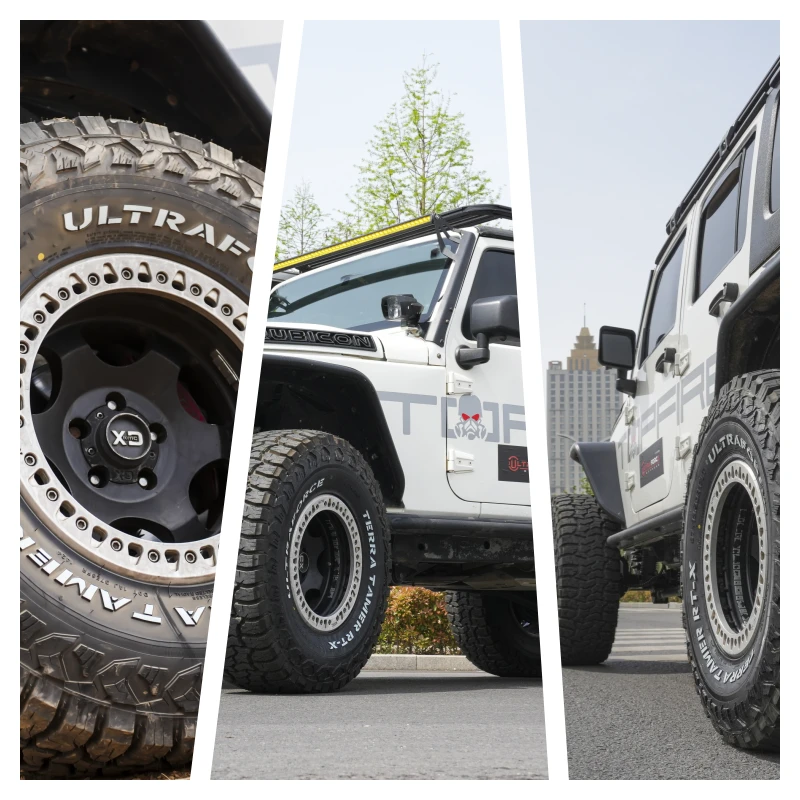Introduction
Running mud tires on the highway? The wrong PSI can hurt performance, fuel economy, and even safety.
Mud tires need to balance traction, comfort, and durability when driving on the highway. Unlike highway tires designed for smooth, high-speed travel, mud tires have deep tread patterns and aggressive designs that can make highway driving tricky if not properly managed. This guide helps car owners find the best tire pressure (PSI) for mud tires when driving on highways, debunk common misunderstandings, and provide actionable steps to optimize tire performance.
Understanding Mud Tires vs. Highway Tires
Features of Mud Tires:
Deep tread blocks: Essential for gripping mud, sand, and loose terrain.
Soft rubber compounds: Designed to flex and conform to uneven surfaces.
Strong reinforced sidewalls: Provide durability against rocks and off-road impacts.
Challenges of Highway Driving:
Loud road noise: Due to aggressive tread patterns.
Fast wear: Softer rubber wears more quickly on pavement.
High fuel consumption: Increased rolling resistance compared to highway tires.
Understanding Mud Tire PSI: Why It Matters
Tire pressure affects multiple aspects of driving, including handling, ride comfort, fuel efficiency, and tire longevity. For mud tires, maintaining an optimal PSI for highway use is particularly important because these tires are not originally designed for extended pavement driving.
Here’s how tire pressure influences different aspects of your driving experience:
Traction & Stability – Overinflated tires reduce the contact patch with the road, leading to less traction and a rougher ride.
Wear & Longevity – Underinflated tires wear out faster, especially on the outer edges, while overinflation leads to excessive wear in the center.
Fuel Efficiency – Incorrect PSI can lead to increased rolling resistance, forcing the engine to work harder and consuming more fuel.
Ride Comfort – Overinflation makes the ride harsher, while underinflation can cause excessive movement and instability.
Recommended PSI for Mud Tires on Highways
The ideal PSI for mud tires on highways depends on several factors, including the tire size, vehicle weight, and manufacturer recommendations. Below is a general guideline for setting the right PSI:
| Tire Size | Off-Road PSI | Highway PSI |
|---|---|---|
| 33" Mud Tires | 15-20 PSI | 30-35 PSI |
| 35" Mud Tires | 12-18 PSI | 32-38 PSI |
| 37" Mud Tires | 10-16 PSI | 34-40 PSI |
| 40" Mud Tires | 8-14 PSI | 36-42 PSI |
Factors Influencing Highway PSI for Mud Tires
① Tire Size & Load Rating
Larger mud-terrain tires (e.g., 35"+) may require a higher PSI than the factory-recommended pressure to maintain stability.
Always refer to the cold tire pressure listed on the door label or manual, then adjust for mud-terrain characteristics.
② Vehicle Weight & Payload
Heavier vehicles, such as lifted trucks and SUVs, require higher PSI for stability.
Towing or carrying heavy loads? Increase PSI by 5-10 PSI to prevent excessive sidewall flexing.
③ Driving Conditions
Pure highway driving: Use manufacturer-recommended PSI or slightly lower (reduce 2-3 PSI) to maximize road contact.
Mixed highway & off-road: Adjust PSI based on terrain. Deflate slightly before off-roading, but reinflate before returning to the highway.
How to Test PSI
Measure Cold Tires:
Let tires sit for at least 3 hours before measuring PSI.
Use a digital tire pressure gauge for accuracy.
Chalk Test:
Draw a chalk line across the tread.
Drive straight for about 50 feet.
Check wear pattern:
Center wears off first → PSI too high.
Edges wear off first → PSI too low.
Even wear → PSI is correct.
Dynamic Adjustment:
Recheck PSI after long highway drives, as heat expansion can give false readings.
How to Adjust PSI for Different Driving Conditions
The key to optimizing tire pressure is adaptability. Here’s how you can adjust PSI based on different scenarios:
| Condition | Adjustment |
| Hot Weather | Reduce PSI by 2-3 to prevent overinflation |
| Cold Weather | Increase PSI by 2-3 to compensate for air contraction |
| High-Speed Driving | Keep PSI within the higher range for stability |
| Heavy Load/Towing | Increase PSI by 5-10 for additional support |
Real-World Experience: Finding the Best PSI
Many off-road enthusiasts have debated the perfect PSI for highway use. Some swear by running their 35” tires at 32 PSI, while others push it up to 38 PSI for better mileage. Personally, I’ve tested UltraForce’s Mud Xtreme 37” tires at 36 PSI on a 500-mile road trip, and the results were impressive—minimal road noise, solid stability, and even tread wear.
Common Mistakes to Avoid
Blindly following sidewall MAX PSI: This is a limit, not the recommended driving pressure!
Ignoring temperature changes: For every 10°F temperature change, PSI fluctuates by ~1 PSI.
Not refilling after off-road driving: After lowering PSI for off-road traction, always reinflate before highway speeds to prevent blowouts.
Expert Tips for Longevity & Performance
Rotate tires every 5,000 miles to distribute wear evenly.
Get annual tire balancing & alignment to prevent uneven wear and vibrations.
Check spare tire pressure: Keep it +5 PSI above normal levels to compensate for air loss over time.
Invest in a portable air compressor: Essential for adjusting PSI between off-road and highway driving.
About UltraForce Tires
At UltraForce Tires, we specialize in designing and manufacturing high-performance mud tires that excel both off-road and on the highway. Our advanced tread patterns, reinforced sidewalls, and durable rubber compounds ensure superior traction, longevity, and fuel efficiency.
We offer customized tire solutions tailored to different terrains, helping off-road enthusiasts and daily drivers achieve optimal performance. Whether you're tackling muddy trails or cruising on the highway, UltraForce Tires delivers top-tier durability, comfort, and reliability.
If you need mud terrain tires, please contact us!
Conclusion: The Sweet Spot for Mud Tire PSI on Highways
While there is no universal PSI for all mud tires on highways, a general range of 30-40 PSI works well depending on your tire size, vehicle weight, and road conditions. UltraForce Tires’ expertly designed off-road tire lineup ensures that you can enjoy both off-road adventure and highway comfort without compromising safety and performance.
For enthusiasts looking for top-tier mud tires that balance highway efficiency and off-road dominance, UltraForce Tires provides a solution that truly delivers—because at UltraForce, ‘U’ mean a lot to us!
